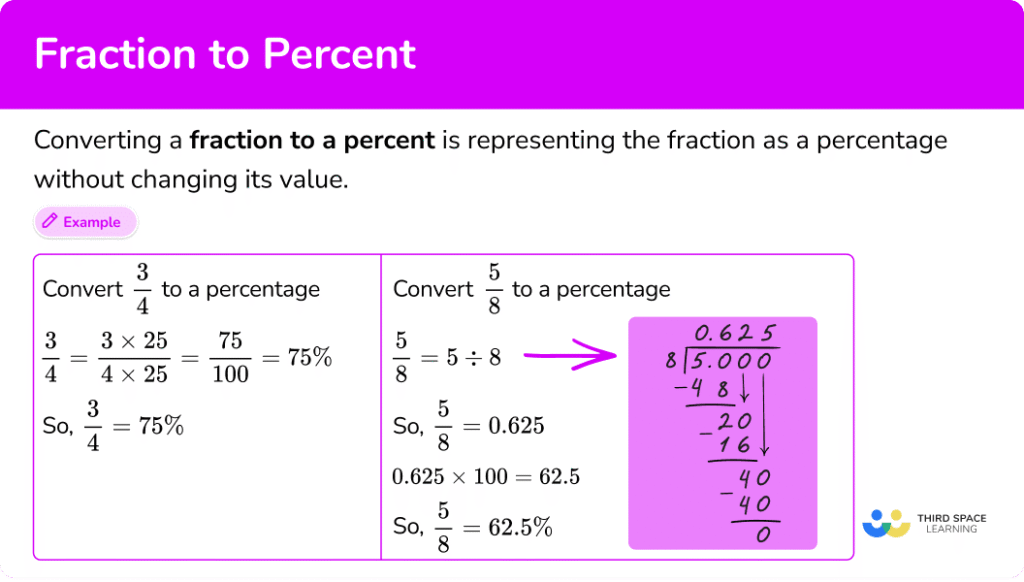
Fractions and percentages are two fundamental ways to express parts of a whole. While fractions use numerators and denominators to represent portions, percentages offer a more convenient way to communicate these proportions as a value out of one hundred. Understanding the relationship between fractions and percentages is crucial for various mathematical and real-world applications. This article will delve into the process of converting fractions to percentages, explore the concept of proportions, and highlight the practical uses of percentage calculations.
This article will guide you through the steps involved in converting fractions to percentages, providing clear explanations and illustrative examples. We’ll also discuss the significance of understanding proportions and how percentage equivalents can be used to represent various real-world scenarios.
Fractions to Percentages Conversion
Converting a fraction to its equivalent percentage involves a simple calculation. The process essentially boils down to multiplying the fraction by 100% and expressing the result as a percentage. For instance, if you have the fraction 3/4, converting it to a percentage would involve multiplying it by 100%: (3/4) * 100% = 75%.
The key to this conversion lies in recognizing that “percent” means “out of one hundred.” Therefore, multiplying a fraction by 100% effectively scales the fraction’s value to represent its proportion out of one hundred. This process can be applied to any fraction, regardless of its complexity.
Understanding Proportions

Proportions are fundamental mathematical relationships that express equality between two ratios. They often involve comparing parts of a whole or different quantities. Understanding proportions is crucial for solving various problems in everyday life, such as calculating discounts, determining rates of change, and scaling measurements.
When dealing with fractions and percentages, proportions can be represented using either form. For example, the proportion 3:4 can be expressed as the fraction 3/4 or the percentage 75%. This interchangeability highlights the interconnected nature of these mathematical concepts.
Percentage Equivalents of Fractions
Many common fractions have readily recognizable percentage equivalents. Some examples include:
- 1/2 = 50%
- 1/4 = 25%
- 3/4 = 75%
- 1/8 = 12.5%
Examples of Fraction to Percentage Conversion

Let’s illustrate the conversion process with a few examples:
- Converting 5/8 to a percentage: (5/8) * 100% = 62.5%
- Converting 7/10 to a percentage: (7/10) * 100% = 70%
- Converting 1/8192 to a percentage: (1/8192) * 100% = 1/8192 as a percentage
Applications of Percentage Calculation
Percentage calculations are ubiquitous in various fields and everyday situations. Some common applications include:
- Finance: Calculating interest rates, discounts, and taxes.
- Sales and Marketing: Tracking sales growth, analyzing customer demographics, and determining marketing campaign effectiveness.
- Education: Grading systems, representing test scores as percentages, and calculating student progress.
- Health and Medicine: Expressing medication dosages, tracking patient recovery rates, and analyzing medical statistics.
Conclusion
Converting fractions to percentages is a fundamental mathematical skill with wide-ranging applications. Understanding the relationship between these two representations of proportions empowers us to analyze data, solve problems, and make informed decisions in various contexts. By mastering this conversion process and grasping the concept of proportions, we can navigate the complexities of mathematics and real-world scenarios with greater ease and accuracy.
